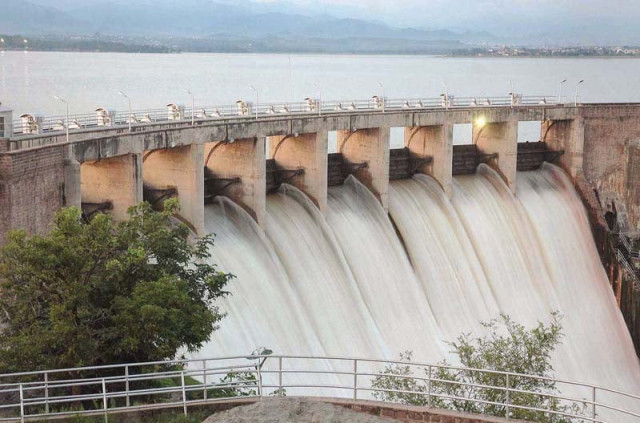The district administration opened the spills of the Rawal dam on Sunday after the rain continues the water level of the deposit at 1,748 feet.
According to the spokesman for the administration of the territory of the capital of Islamabad (ICT), the level was only four feet below the maximum storage capacity of the 1,752 feet dam, which led to the release of water to mitigate the risk of overflow.
The authorities confirmed that after downloading water for approximately six and a half hours, the water level of the dam fell to 1,746 feet. The spills subsequently closed as the situation stabilized.
The decision to open the spills was taken in coordination with several departments, including district administration, 1122 rescue and the water and sanitation agency (WASA).
These teams were deployed in critical locations, including bridges, currents and vulnerable points downstream, to administer the flow of released water and guarantee public safety.
The Nilore assistant commissioner supervised the entire water release operation, supervising the soil safety measures.
The magistrates, rescue 1122 teams, ambulances and personnel of the Council of the Union remained parked at different bridges and along the banks of the streams throughout the discharge period.
The administration maintained contact with the Department of Meteorology of Pakistan (PMD) to monitor rain patterns and evaluate new risks.
According to the officials, the dumps of the dam only open when the deposit approaches their storage limit, to manage the water pressure and avoid potential damage in the structure of the dam.
The authorities assured that despite heavy rains, important floods or emergencies were reported down due to timely coordination and monitoring.
However, residents were advised that they live near the water channels that remained alert for the updates of the district administration in case of greater rains.
Rawal Dam supplies water to Islamabad and Rawalpindi and plays a key role in seasonal rainfall.
Its operation, together with climate monitoring, is part of broader efforts to mitigate the risk of urban floods in twin cities during the monsoon season.
The district administration declared that it would continue to monitor the situation closely and take preventive measures based on future weather forecasts.
The public was urged to cooperate with the authorities and follow security instructions to avoid any adversary incident.
Early in the day, the Department of Meteorology had predicted additional rains in the region, which increases concerns about increasing water levels in dams and rivers.
However, the Administration assured that all caution measures were in place to address the impact of continuous rain.




